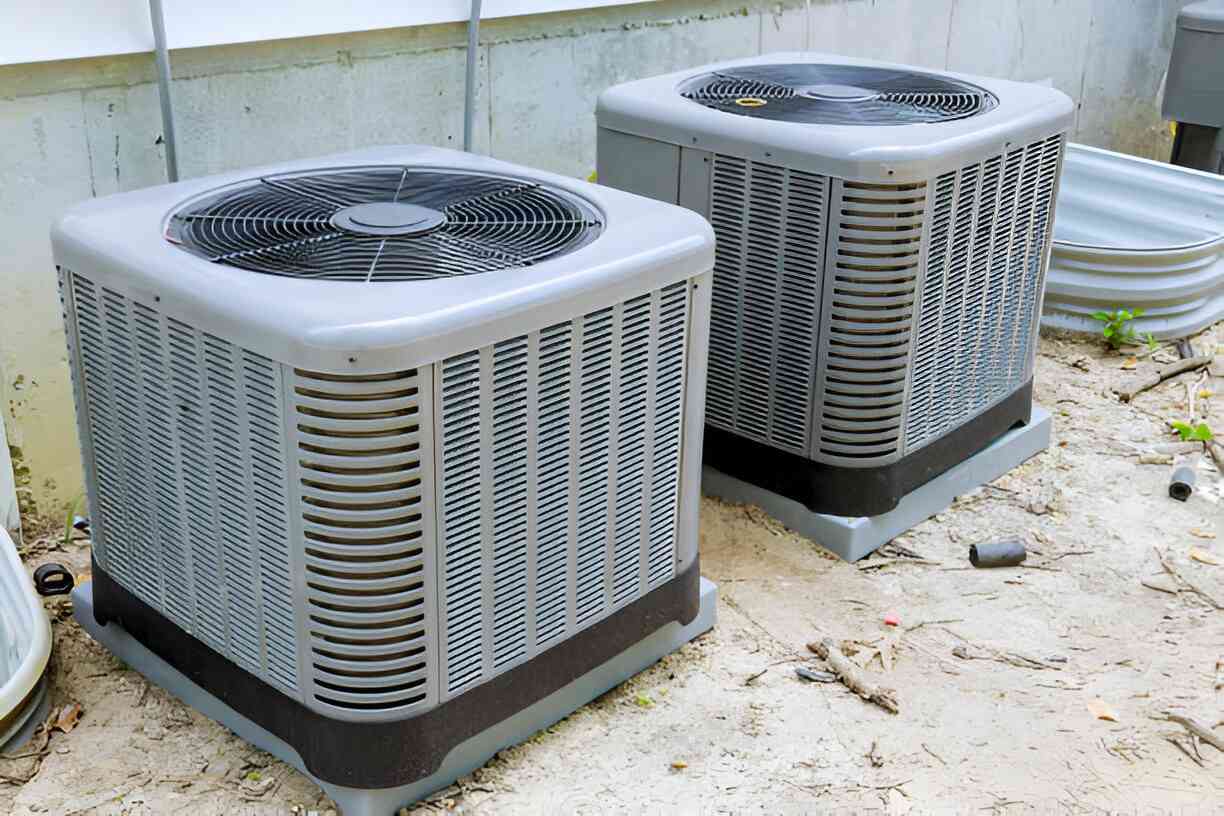AC Installation in Temple Terrace, FL


Common AC installation types and issues in Temple Terrace
- Split systems (central air): Most single-family homes get a condenser outside and an evaporator coil in the air handler. Common issues include improper sizing and undersized ductwork.
- Heat pumps: Useful for moderate winters and efficient cooling. Corrosion protection and freeze control require attention in coastal areas.
- Ductless mini-splits: Good for room additions or homes without ductwork. Proper placement and condensation drain routing are essential.
- Common installation problems: Incorrect load calculations, inadequate refrigerant charge, poor refrigerant line insulation, undersized or leaky duct systems, and improper thermostat wiring or placement.
- Local climate impacts: High humidity in Temple Terrace demands accurate humidity control and a system that can dehumidify without overcooling. Salt spray and coastal corrosion pressures can affect outdoor components if you are closer to the bay.
Site assessment and load calculations
A professional installation starts with a detailed site assessment and load calculation. We perform a room-by-room heat load analysis (commonly referred to as Manual J) rather than relying on square footage alone. This evaluates:
- Orientation of the home and window exposures
- Insulation levels, attic ventilation, and building envelope tightness
- Infiltration from doors and windows
- Local shading and roof type
- Electrical capacity and existing ductwork condition
Accurate load calculations ensure the system capacity matches actual cooling requirements. Oversized units short-cycle and fail to dehumidify properly; undersized units run continuously and shorten equipment life.
Unit selection and ENERGY STAR options
Selecting the right unit balances comfort, efficiency, and durability for Temple Terrace conditions.
- Efficiency ratings: Look for systems with higher SEER ratings for lower cooling season costs. ENERGY STAR qualified models meet stricter efficiency and performance standards and can yield significant utility savings in hot climates.
- Refrigerant types: Modern units use environmentally friendlier refrigerants. Proper refrigerant charge is vital for warranty and performance.
- Corrosion and wind resilience: For homes prone to coastal conditions or storms, consider units with protective coatings and robust mounting to handle high winds and salt exposure.
- Capacity and features: Variable-speed compressors and multi-stage systems offer improved humidity control and quieter operation, which can be beneficial in Temple Terrace humidity-heavy summers.
Ductwork and thermostat integration
Ductwork integration is often the hidden determinant of system performance.
- Assess existing ducts for leaks, insulation, and proper sizing
- Repair or replace sections that restrict airflow
- Add return pathways where needed and balance the system to eliminate hot or cold roomsThermostat integration affects comfort and efficiency. Smart thermostats with staging support and humidity sensing help maintain stable indoor conditions while optimizing runtime.
Permit and code compliance in Temple Terrace
AC installations in Temple Terrace must comply with the Florida Building Code and local Hillsborough County permit requirements. Key compliance points include:
- Proper electrical disconnects and circuit sizing
- Condensate drainage per code and flood zone elevation considerations where applicable
- Proper refrigerant handling documentation required for environmental regulations
- Outdoor unit clearances and structural mounting consistent with wind-load requirements
A compliant installation protects you from liability, ensures eligibility for equipment warranties, and meets local inspection standards.
Step-by-step installation procedure
- Final review of load calculations and equipment selection with the homeowner
- Obtain required permits and schedule inspections per local code
- Prepare the site: level pad or platform for the condenser, ensure proper clearances, and protect landscaping
- Remove old equipment and cap or seal unused refrigerant lines safely
- Install indoor coil or air handler, secure duct connections, and seal with mastic or approved tapes
- Run refrigerant lines and electrical conduit; insulate refrigerant lines thoroughly to prevent energy loss and condensation
- Mount outdoor condenser, connect refrigerant lines, electrical, and communication wiring
- Evacuate the system to remove moisture and check for leaks using a vacuum and soap test if needed
- Charge the system to manufacturer specifications and measure operating pressures
- Program thermostat and perform initial system startup, monitoring temperatures and airflow
- Conduct final walkthrough and explain operation, filter type, and maintenance expectations
Quality assurance testing and customer walkthrough
Post-install testing confirms performance and comfort:
- Verify supply and return temperatures and calculate delta-T to ensure proper heat transfer
- Measure refrigerant pressures and confirm correct charge for ambient conditions
- Test airflow across the coil and inspect duct balancing
- Check condensate removal and secondary drain protection
- Confirm safety switch operation and electrical connections
After testing, the installer should walk you through the system operation, thermostat scheduling, filter replacement intervals, and how to spot early warning signs such as unusual noises, reduced airflow, or rising energy bills.
Warranty and maintenance plan options
A new system should include manufacturer warranties on major components and compressor protection. Typical coverage elements:
- Compressor and major component warranties from the manufacturer
- Labor warranties from the installing contractor for workmanship
- Extended warranties for parts and labor available from some manufacturers
Regular maintenance preserves warranties and efficiency:
- Semiannual or annual tune-ups focusing on refrigerant charge, coil cleaning, airflow, electrical connections, and thermostat calibration
- Periodic duct inspections and cleaning where needed
- Filter replacement schedule tailored to your home’s occupancy and indoor air quality needs
Maintenance plans often include prioritized service and seasonal checkups to prevent breakdowns during peak Temple Terrace heat.
Why prompt, professional installation matters in Temple Terrace
Proper AC installation is not just about immediate comfort. In Temple Terrace, an accurately sized and code-compliant system minimizes humidity-related mold risk, reduces energy bills during long cooling seasons, and withstands local weather stressors. Timely professional installation reduces emergency repairs and extends equipment life, providing predictable performance when you need it most.
Choosing a professional process that covers site assessment, ENERGY STAR options, ductwork and thermostat integration, permit compliance, careful installation, rigorous testing, and transparent warranty and maintenance planning delivers dependable cooling tailored to Temple Terrace homes.
Service Areas


